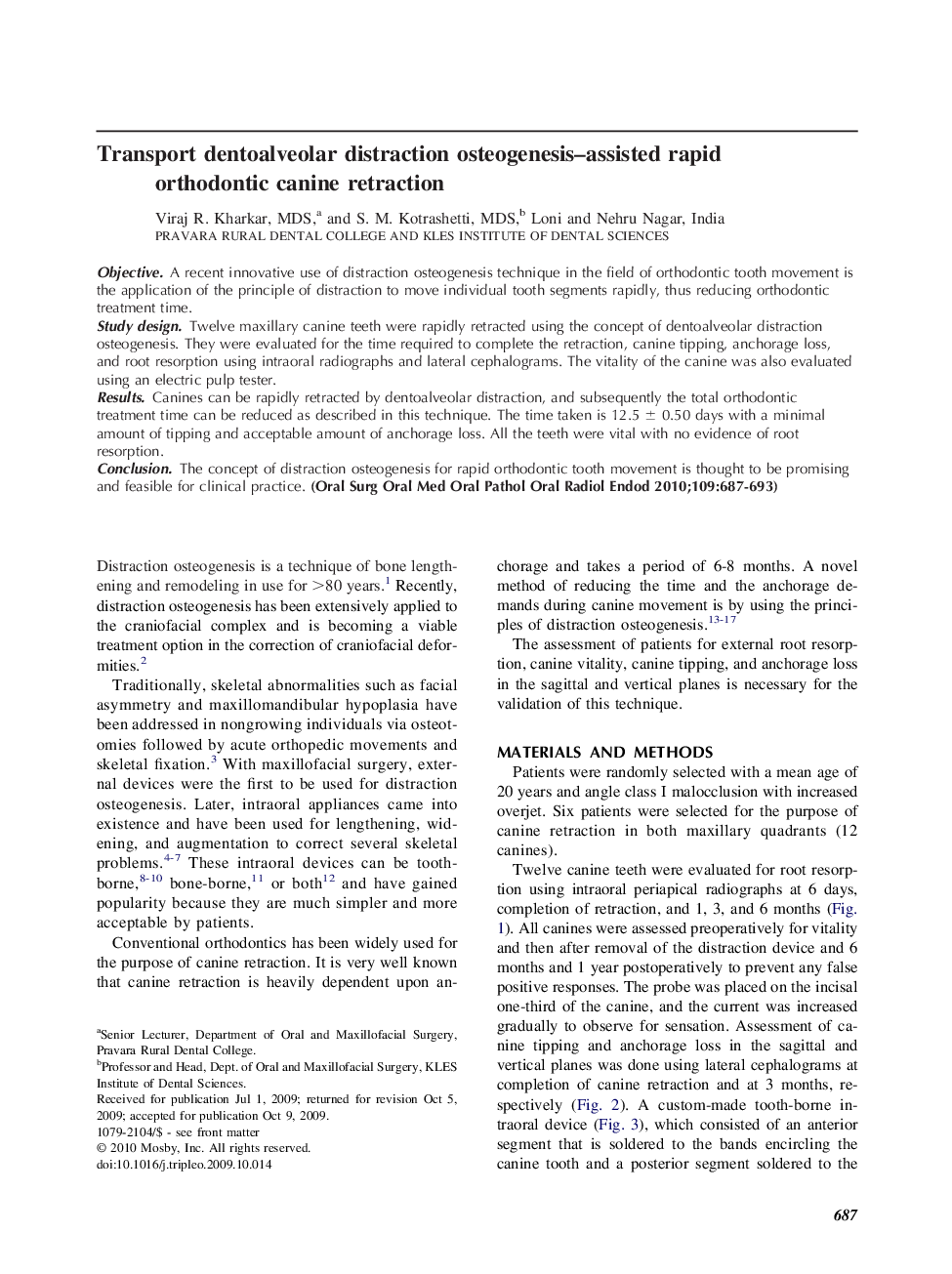| Article ID | Journal | Published Year | Pages | File Type |
|---|---|---|---|---|
| 3167627 | Oral Surgery, Oral Medicine, Oral Pathology, Oral Radiology, and Endodontology | 2010 | 7 Pages |
ObjectiveA recent innovative use of distraction osteogenesis technique in the field of orthodontic tooth movement is the application of the principle of distraction to move individual tooth segments rapidly, thus reducing orthodontic treatment time.Study designTwelve maxillary canine teeth were rapidly retracted using the concept of dentoalveolar distraction osteogenesis. They were evaluated for the time required to complete the retraction, canine tipping, anchorage loss, and root resorption using intraoral radiographs and lateral cephalograms. The vitality of the canine was also evaluated using an electric pulp tester.ResultsCanines can be rapidly retracted by dentoalveolar distraction, and subsequently the total orthodontic treatment time can be reduced as described in this technique. The time taken is 12.5 ± 0.50 days with a minimal amount of tipping and acceptable amount of anchorage loss. All the teeth were vital with no evidence of root resorption.ConclusionThe concept of distraction osteogenesis for rapid orthodontic tooth movement is thought to be promising and feasible for clinical practice.
